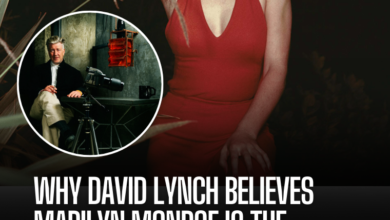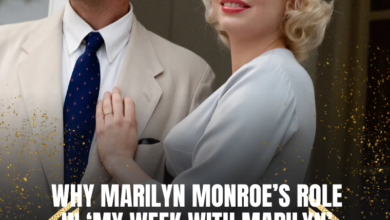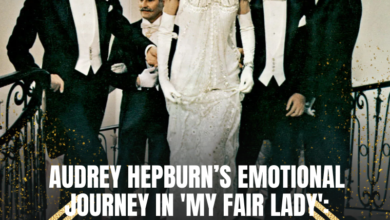Revisit Audrey Hepburn’s Legendary ‘Roman Holiday’ – Discover the Hidden Gems of Rome’s Movie Magic
OPINION: This article may contain commentary which reflects the author's opinion.
Audrey Hepburn’s portrayal of Princess Ann in Roman Holiday (1953) not only captured the hearts of audiences but also immortalized Rome as the ultimate destination for romance and adventure. Alongside Gregory Peck’s charming reporter Joe Bradley, Hepburn’s whirlwind tour of the Eternal City set a timeless standard for how one might explore the magical streets of Rome. As the city continues to bustle with life, many of the locations seen in the film remain as enchanting as ever, offering visitors the chance to walk in the footsteps of these cinematic icons.
A Day in the Life of Princess Ann: The Roman Adventure
In Roman Holiday, Hepburn’s character, Princess Ann, embarks on a day of freedom away from the constraints of her royal duties. With nothing but a knowledgeable guide and a Vespa, she crisscrosses the city, taking in everything from bustling streets to quiet palaces. It’s a dreamy journey that seems too perfect, even for a movie. But, as Federico Fellini once said, “Rome is the most wonderful movie set in the world,” and in this city, where history and modernity blend seamlessly, it’s easy to see why.
Start your own Italian escape at the Palazzo Colonna, where Hepburn’s character finds respite from the chaos of her royal life. A calm stillness takes over the opulent halls of this historic palace, which stands in stark contrast to the busy streets just beyond its walls. The palace offers self-guided tours in the morning, making it an ideal place to immerse yourself in Roman history before diving back into the city’s vibrant energy.
The Spanish Steps and the Search for Romance
From the Palazzo Colonna, a 15-minute walk will bring you to one of Rome’s most iconic spots—the Spanish Steps. In Roman Holiday, it’s here that Princess Ann and Joe Bradley share a gelato, enjoying a rare moment of peace amidst their fast-paced adventure. The Spanish Steps, with their purple flowers blooming in the spring and summer, offer a picturesque view of the city. While you might not be sharing a gelato with Gregory Peck, it’s easy to imagine the film’s romantic tension in the air as you climb to the top, where the bustling city of Rome unfolds in a mosaic of color.
Though the film was shot in black and white, the Spanish Steps—and all of Rome—are filled with the colors of life. From this vantage point, Rome appears as a canvas of terracotta rooftops, the hues shifting in the sunlight as you look down upon the city’s many winding streets.
Ancient Rome Meets Modern Espresso Culture
For those seeking a deeper connection with Rome’s rich history, there’s no better place than the area around the Pantheon. This ancient monument, dating back to 126 AD, is seamlessly integrated into modern Roman life. Surrounding the Pantheon are cafes where locals and tourists alike sip espresso while the grandeur of the building looms above them. In Roman Holiday, Hepburn and Peck watch the world go by here, providing an unforgettable scene of two souls enjoying life at a leisurely pace.
It’s easy to get lost in the atmosphere of this place. As you sit in one of the many outdoor cafes, you might find yourself looking up at the Pantheon and feeling a connection to the thousands of years of history that it represents. It’s moments like these, when time seems to slow down, that make Roman Holiday so magical. Here, it’s not about ticking off the landmarks on your checklist but about experiencing the present moment, much like Hepburn’s character does in the film.
The Arch of Septimus Severus: A Quiet Escape
If you’re eager to explore more of Rome’s ancient past, the Arch of Septimus Severus is a perfect stop. Located on the far side of the Roman Forum, this grand arch stands as a reminder of the Roman Empire’s glory. It’s a quieter spot compared to the crowded Colosseum or the Forum itself, providing a peaceful retreat to reflect and marvel at the ruins. Here, you can take in the soft sounds of Rome’s bustling city life while surrounded by ancient stone, giving you the feeling that time has slowed down in this sacred place.
A Roman Dream That Never Ends
Roman Holiday may have been released in 1953, but its charm is timeless. The film captures the spirit of Rome in a way that has influenced how we view the city today. As Francesco Petrarca, the famed Italian poet, once said, “A fool is one who admires other cities without visiting Rome.” In Roman Holiday, Audrey Hepburn and Gregory Peck encapsulate this very sentiment, offering a vision of Rome that is both romantic and full of wonder.
Whether you’re visiting the iconic landmarks like the Spanish Steps and the Pantheon or venturing off the beaten path to explore quieter spots like the Arch of Septimus Severus, Rome offers something for every traveler. Just as Roman Holiday depicted the city as a place of both excitement and introspection, modern-day Rome continues to be a destination where fantasy and reality seamlessly intertwine.
Conclusion
A trip to Rome, inspired by Roman Holiday, offers more than just a cinematic experience—it’s an invitation to lose yourself in the beauty and history of one of the world’s most iconic cities. Like Hepburn’s Princess Ann, you too can have fun, seek excitement, and perhaps, even find a little romance along the way. In a city where history lingers around every corner, the magic of Roman Holiday is still very much alive.



